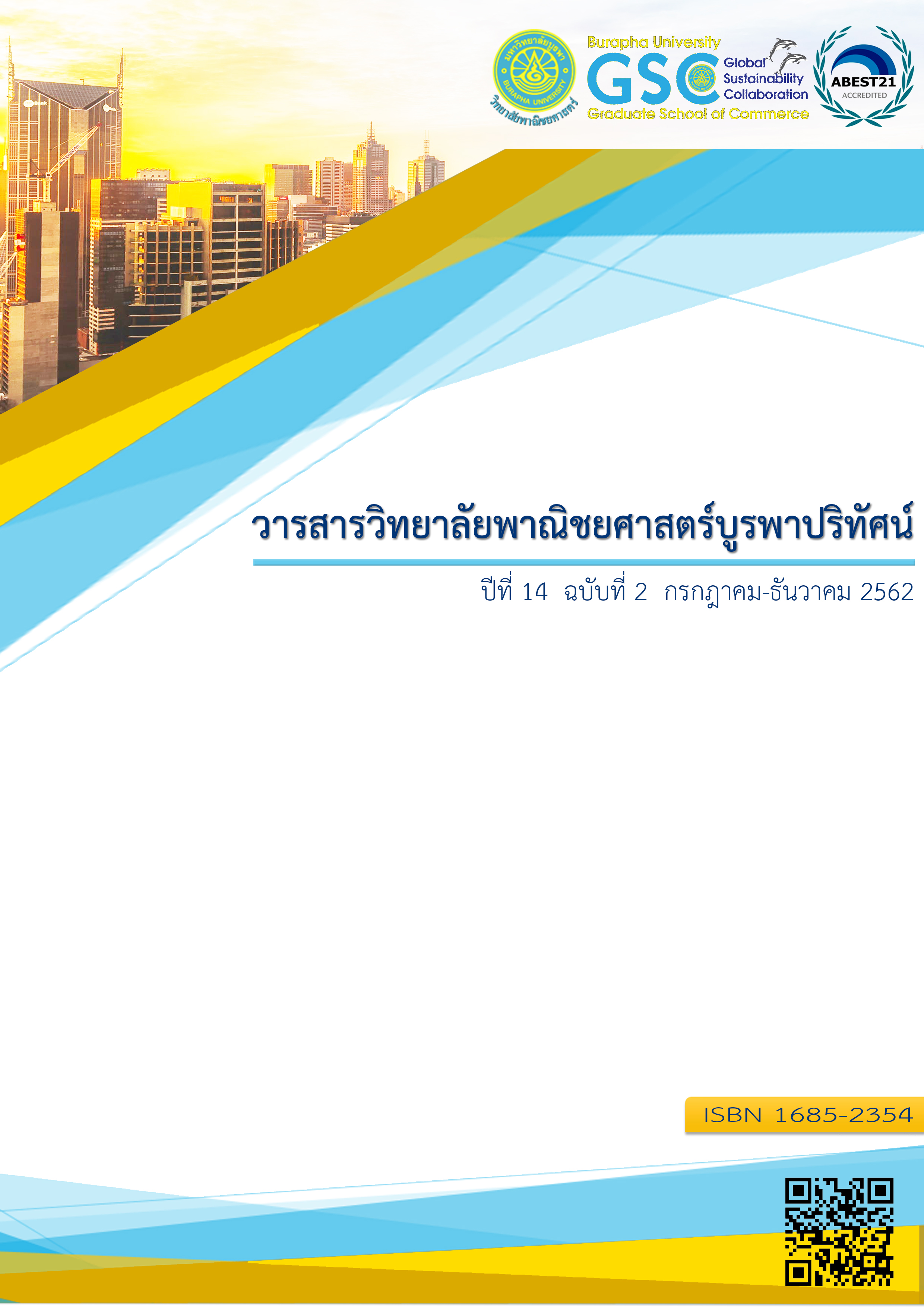THE INFLUENCES OF RELATIONSHIP RECRUITMENT, SELECTION, TRAINING, DEVELOPMENT AND EVALUATION AFFECT ON POTENTIALITY AND EFFECTIVENESS OF TAX AUDITORS
Main Article Content
Abstract
This research aimed to study (1) the influence of the factors: selection, training, development, evaluation affect on Potentiality and Effectiveness of Tax Auditors (2) the influence of the factors: selection, training, development, evaluation affect on Effectiveness of Tax Auditors and (3) the influence of Potentiality affect on Effectiveness of Tax Auditors . The researchers utilized a quantitative analysis and the data set was analyzed by descriptive statistics and path analysis model. The research instrument was a questionnaire and conducted through randomly selected 404 at 550 Tax auditors in Thailand .The research results found that the results of hypothesis testing as showed: selection, training, development, evaluation affect on had positively direct affected on Potentiality and Effectiveness of Tax Auditors and only selection did not affect on Effectiveness.
The path analysis model was completed with empirical data at the acceptable level consists
of: x2/df = 0.000, p-value = 1.000, GFI = 1.000, AGFI = 1.000 and RMSEA = 0.000
Article Details
The owner of the article does not copy or violate any of its copyright. If any copyright infringement occurs or prosecution, in any case, the Editorial Board is not involved in all the rights to the owner of the article to be performed.
References
กระทรวงพาณิชย์ สืบค้น จาก https://www.dbd.go.th/
กรมสรรพากร(2559). รายงานประเด็นความผิดจากการปฏิบัติงานของผู้สอบบัญชีภาษีอากร, กรม สรรพากร. คู่มือการปฏิบัติงานของผู้สอบบัญชีภาษีอากร.
นิพันธ์ เห็นโชคชัยชนะ และศิลปพร ศรีจั่นเพชร (2559).การสอบบัญชี.กรุงเทพฯ : ทีพีเอ็น เพรส.
สมาคมผู้สอบบัญชีภาษีอากรแห่งประเทศไทย, (2556).เอกสารประกอบการประชุมใหญ่สามัญ ประจำปี 2560.
สุเทพ พงษ์พิทักษ์. (2552). สัมภาษณ์พิเศษ: สรรพากรสาส์น.ปีที่ 56 ฉบับที่ 4 เมษายน 2552.
Armstrong, M. (2006) Performance management, key strategies and practical guidelines. 3rd edition. Great Britain: Kogan Page Limited.
Armstrong, Michael. (2012). Handbook of Human Resource Management Practice. (12th ed). London: Kogan Page Limited.
Abubakar Tabiu (2013) Assessing The Effects Of Human Resource Management (HRM) Practices On Employee Job Performance: A STUDY OF USMANU DANFODIYO
UNIVERSITY SOKOTO.
Bernardin and Joyce (2012) (2012)Human resource management : an experiential approach .McGraw-Hill, 2012.
Birdi, K., Clegg C., Patterson M., Robinson A., Stride, C.B., Wall, T. D. & Wood, S. J. (2008). The impact of human resource and operational management practices on company productivity: A longitudinalstudy. Personnel Psychology, 61(3), 467-489.
Creswell, John W. and Clark, Vicki L. Pano. (2007). Designing and Conducting Mixed Methods Research. Thousand Oaks. CA : Sage.
Chee Yang Fong, Keng Boon Ooi, Boon In Tan, Voon Hsien Lee, Alain Yee Loong Chong, (2011) .HRM practices and knowledge sharing: an empirical study, International Journal of Manpower, Vol. 32 Issue: 5/6, pp. Emerald Group Publishing Limited
Chien, M. H. (2007). A study of the factors effecting organizational effectiveness. Retrieved October 14, 2007, fromhttps://www.hicbusiness.org/biz2003procedures/chien% min-huei%203.pdf
Dana B. Minbaeva, (2005) "HRM practices and MNC knowledge transfer", Personnel Review, Vol. 34 Issue: 1, pp.125-144, Emerald Group Publishing Limited.
Eddy Madiono Sutanto & Milly Kurniawan (2013). The Impact of Recruitment, Employee Retention and Labor Relations to Employee Performance on Batik Industry in Solo City, Indonesia. International Journal of Business and Society, Vol. 17 No. 2, 2016, 375-390.
Hanson, E. (2011). Talent Reviews and High-Potential Identification: Overcoming Five Common Challenges. Pittsburgh, PA: Development Dimensions International.
Gibson, James L., Ivancevich John M., Donnelly James H,Jr., & Konopaske Robert(2012). Organization : Behavior, Structure, Processes (14th ed.). New York: McGraw - Hill.
George N. Theriou and Prodromos D. Chatzoglou, The impact of best HRM practices on performance .Employee Relations Vol. 36 No. 5, 2014 pp. 535-561.Emerald Group Publishing Limited
Golob, T. F. (2003). Review structural equation modeling for travel behavior research.
Transportation Research. 37: 1-25.
Hair, J. F., Jr., Black, W. C., Babin, B. J., Anderson, R. E. & Tatham, R. L. (2010). Multivariate
data analysis (7 ed.). New Jersey: Pearson: Prentice Hall.
Hang-yue Ngo; Chun-Yan Jiang; Raymond Lo, (2013). Linking HRM competency to firm performance : an empirical investigation of Chinese firms Personnel ReviewVol. 43 No. 6, 2014pp. 898-914 Emerald Group Publishing Limited
Henrietta Lake, (2006).Learning to Compete: The Performance Effect of HumanResource Management and Work Organization in the South Indian Garment Industry.
Institute of Chartered Accountants in England and Wales (ICAEW). 2012. Framework. Available at: https://www.icaew.com
Jaekwon Ko, (2013) The Relationship between HRM Practics and Organizational Performance in the Public Sector: Focusing on Mediating Roles of Work Attitude International Review of Public Administration 2013, Vol. 18, No. 3.
John Bernardin, H & Joyce E.A(2013). Russe Human resource management : an experiential approach . New York : McGraw-Hill
Ivancevich, J. M. (2007). Human resource management (10 th ed.). New York: McGraw-Hill.
Khalid, e. a. (2012). HRM Practices and Employee Performance in Public Sector Organizations in Pakistan: An Empirical study. International Journal of Management Sciences and Business Research, 2013 ISSN (2226-8235) Vol-3, Issue 2
Katou, AA & Budhwar, PS 2010, 'Causal relationship between HRM policies and organisational performance: Evidence from the Greek manufacturing sector', European Management Journal, vol. 28, no. 1, pp. 25-39.
Kim, Yong Woon;Ko, Jaekwon (2014). HR Practices and Knowledge Sharing Behavior: Focusing on the Moderating Effect of Trust in Superviso. Public Personnel Management; Winter 2014; 43, 4; ABI/INFORM Collectionpg. 586.
Mathis, R.L. and Jackson, J.H. (2010) Human Resource Management. 13th Edition, South- Western College Publishing, Ohio.
Petter, S., DeLone, W. H. and McLean, E. R. (2008). Measuring information systems success :
Models, dimensions, measures, and interrelationships. European Journal of
Information Systems. 17(3): 236-263.
Raymond, A. N., & etal. (2006). Human resource management: Gaining a competitive advantage. (8th ed.). New York: McGraw-Hill.
Ready, D.A., Conger, J.A. & Hill, L.A. (2010), “Are you a high potential?” Harvard Business
Review, Vol. 88, No. 6, pp. 78-84.
Robins, S.P. and Coulter (2012), M. Management (12 nd.ed). New Jersey: Prentice Hall.
Saira HASSAN (2016), Impact of HRM Practices on Employee’s Performance. International Journal of Academic Research in Accounting, Finance and Management Sciences
Vol. 6, No.1, January 2016, pp. 15–22.
Zirra, e. a. (2017). Impact of Recruitment and Selection Strategy on Employees’ Performance: A Study of Three Selected Manufacturing Companies in Nigeria. International Journal of Innovation and Economic Development. Volume 3 Issue 3 August, 2017 Pages 32-42


